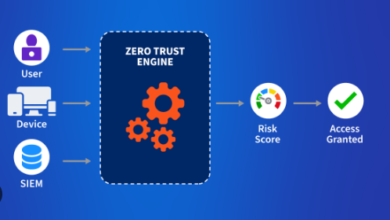Navigating the Future of Insurance: RPA’s Role in Digital Transformation

Introduction
The insurance industry is undergoing a significant transformation driven by advancements in technology. One of the most impactful technologies in this digital revolution is Robotic Process Automation (RPA). RPA streamlines operations, improves efficiency, and enhances customer experiences, making it a critical tool for insurers looking to stay competitive. This article explores RPA’s role in the digital transformation of the insurance industry, its benefits, and key applications.
Understanding RPA in the Insurance Industry
What is RPA?
Robotic Process Automation (RPA) involves using software robots or “bots” to automate repetitive, rule-based tasks that are typically performed by humans. These tasks include data entry, processing claims, and customer service interactions. RPA bots can work 24/7 without errors, significantly improving operational efficiency.
Why is RPA Important for Insurance?
The insurance industry deals with vast amounts of data and numerous repetitive tasks. RPA helps insurers automate these processes, reducing operational costs, minimizing errors, and freeing up human employees to focus on more complex, value-added activities. This leads to improved customer satisfaction and a more agile organization. The RPA for insurance industry is revolutionizing operations by streamlining critical functions like claims processing, underwriting, and policy administration.
Benefits of RPA for Insurance Companies
Increased Efficiency and Productivity
RPA bots can handle repetitive tasks quickly and accurately, which increases overall productivity. Processes that used to take hours or days can now be completed in minutes, allowing insurers to process claims faster and provide quicker responses to customer inquiries.
Cost Savings
By automating routine tasks, insurance companies can significantly reduce labor costs. RPA also reduces the need for extensive training and minimizes the risk of human error, leading to cost savings in error rectification and compliance fines.
Enhanced Customer Experience
RPA enables insurers to provide faster and more accurate service to customers. Automated processes ensure that claims are processed quickly, customer queries are answered promptly, and policies are issued without delay. This level of efficiency enhances customer satisfaction and loyalty.
Improved Compliance and Risk Management
RPA bots can be programmed to adhere strictly to regulatory requirements, ensuring that all processes are compliant with industry standards. This reduces the risk of non-compliance and associated penalties. Additionally, RPA provides detailed audit trails, making it easier to track and review processes for compliance purposes. By automating repetitive tasks and workflows, RPA enables insurance companies to streamline operations, reduce manual effort, and improve productivity.
Scalability and Flexibility
RPA solutions can be easily scaled to accommodate growing business needs. Whether it’s handling increased claim volumes or expanding to new markets, RPA provides the flexibility to adjust operations without significant investments in additional human resources.
Key Applications of RPA in Insurance
Claims Processing
Claims processing involves multiple steps, from initial submission to final settlement. RPA can automate the entire process, including data extraction from claim forms, validation against policy details, fraud detection, and final settlement. This speeds up the process and reduces the likelihood of errors.
Underwriting
Underwriting requires analyzing vast amounts of data to assess risk and determine policy terms. RPA can gather and process data from various sources, perform risk assessments, and generate policy documents. This not only speeds up the underwriting process but also ensures more accurate risk evaluation.
Policy Administration
Policy administration includes issuing new policies, renewals, and cancellations. RPA can handle these tasks efficiently by extracting information from applications, verifying details, updating systems, and generating policy documents. This automation reduces manual effort and speeds up policy issuance.
Customer Service
RPA can enhance customer service by automating routine interactions, such as answering frequently asked questions, processing policy changes, and providing claim status updates. Bots can handle these tasks through chatbots or automated email responses, ensuring quick and accurate service.
Compliance and Reporting
Insurance companies are subject to strict regulatory requirements and must generate regular reports. RPA can automate the collection, processing, and reporting of data, ensuring compliance with regulatory standards and reducing the risk of errors in reporting.
Implementing RPA in Insurance: Best Practices
Start with a Clear Strategy
Define your objectives and identify the processes that will benefit most from automation. Develop a clear RPA strategy that aligns with your overall business goals and includes a roadmap for implementation.
Engage Stakeholders
Involve key stakeholders from various departments to ensure that everyone understands the benefits of RPA and is committed to the transformation process. Collaboration is essential for successful implementation.
Choose the Right RPA Tools
Select RPA tools that meet your specific needs and can integrate seamlessly with your existing systems. Evaluate vendors based on their experience, support, and the scalability of their solutions.
Pilot and Scale
Begin with a pilot project to test the RPA solution on a small scale. Use the insights gained to refine your approach before scaling the implementation across the organization. Monitor performance and make adjustments as needed.
Focus on Change Management
RPA implementation can impact employees and existing workflows. Develop a change management plan that includes training, communication, and support to help employees adapt to the new technology and processes.
Future Trends in RPA for Insurance
Integration with AI and Machine Learning
Combining RPA with artificial intelligence (AI) and machine learning (ML) can enhance automation capabilities. AI and ML can analyze unstructured data, improve decision-making processes, and enable predictive analytics, taking RPA to the next level.
Advanced Analytics and Insights
RPA will increasingly be used to gather and analyze data, providing insurers with valuable insights into customer behavior, risk patterns, and operational efficiency. These insights can inform strategic decisions and drive innovation.
Hyperautomation
Hyperautomation involves the use of advanced technologies, including RPA, AI, and ML, to automate complex business processes end-to-end. This approach will enable insurers to achieve higher levels of automation and efficiency, transforming their operations.
Enhanced Customer Engagement
Future RPA solutions will focus on enhancing customer engagement through personalized and interactive experiences. Advanced chatbots and virtual assistants will provide more intuitive and responsive customer service, improving satisfaction and loyalty.
Conclusion
Robotic Process Automation (RPA) is revolutionizing the insurance industry by automating repetitive tasks, reducing costs, and enhancing customer experiences. As insurers navigate the future of digital transformation, implementing RPA can provide a competitive edge and drive operational excellence. By understanding the benefits, applications, and best practices for RPA, insurance companies can harness its full potential to thrive in a rapidly evolving market.






